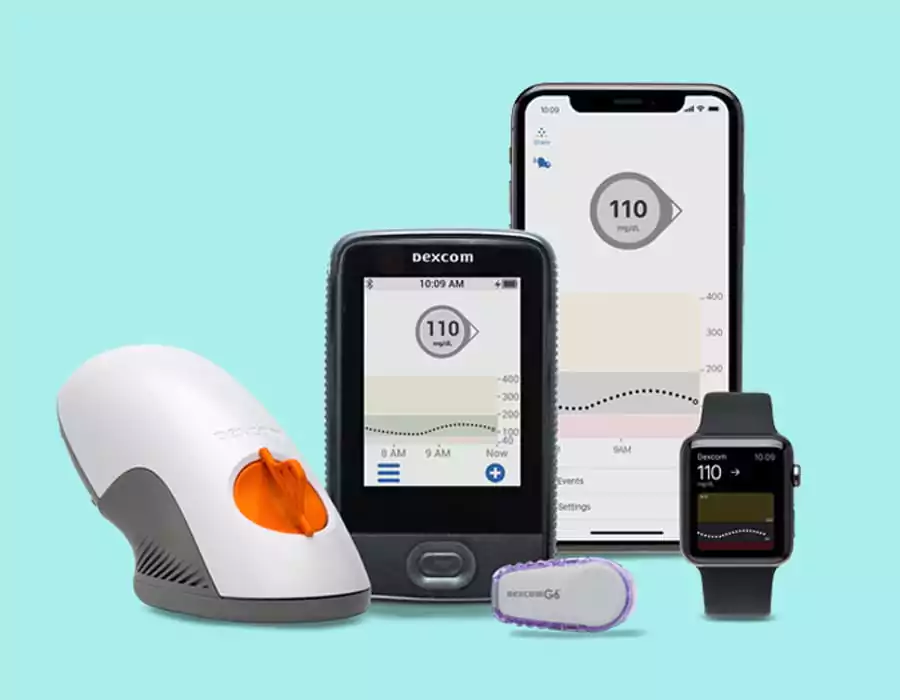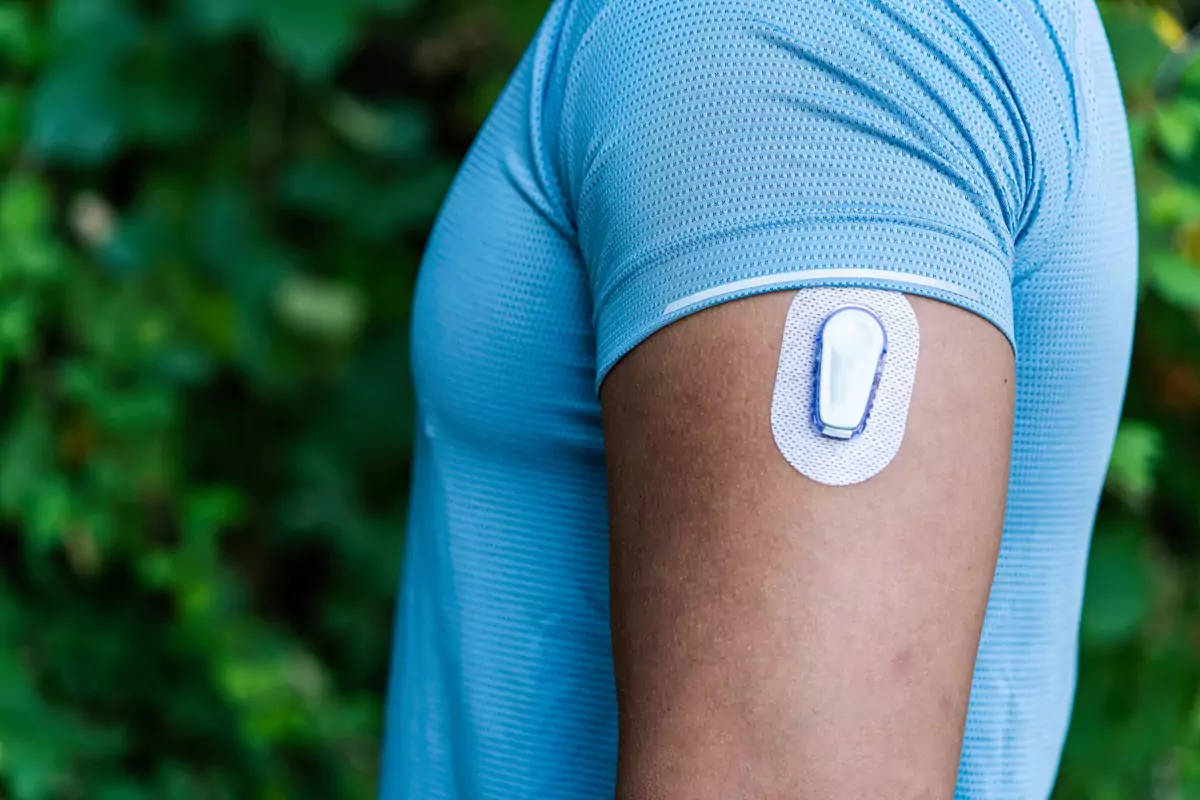





How Often Do You Change the Transmitter on a Dexcom G6?


Table of Contents
- Understanding the Dexcom G6 Transmitter
- Functionality
- Design and Features
- How Often Should You Change It?
- Lifespan
- How to Replace
- SugarMD Advance Glucose Support
- Why Timely Replacement is Crucial
- Ensuring Accuracy
- Compatibility with Insurance
- The Latest in Dexcom Technology: Dexcom G7
- Conclusion
- About The Author
Dexcom G6 is a revolutionary continuous glucose monitoring (CGM) system that has transformed the lives of people with diabetes. It provides real-time glucose readings, allowing users to manage their condition more effectively. One of the essential components of this system is the transmitter, which sends glucose data to the display device.
In this article, we'll explore how often you need to change the transmitter on a Dexcom G6 and why it's crucial to follow the recommended schedule. Additionally, we'll briefly touch on the latest version of Dexcom, the G7.
Understanding the Dexcom G6 Transmitter
The transmitter on a Dexcom G6 is more than just a small device that attaches to the sensor; it's the heart of the continuous glucose monitoring (CGM) system. This innovative piece of technology sends glucose information to your smart device or receiver, allowing you to track your glucose levels in real time.
Functionality
The transmitter's primary function is to collect data from the sensor, process it, and then transmit it wirelessly to your display device. It enables continuous monitoring without the need for regular finger pricks, providing a more comfortable and convenient way to manage diabetes.
Design and Features
Designed with user comfort in mind, the Dexcom G6 transmitter is sleek and lightweight. It's waterproof, allowing for worry-free daily activities, including showering and swimming. The secure connection between the transmitter and the sensor ensures that data transmission is uninterrupted, providing consistent and accurate readings.
How Often Should You Change It?
Lifespan
The transmitter on a Dexcom G6 lasts for three months, a period carefully calculated based on the device's battery life and optimal performance. After this period, it's essential to replace it with a new one to ensure accurate and reliable readings.
How to Replace
Replacing the transmitter is a straightforward process. You'll need to remove the old transmitter from the sensor, insert a new one, and follow the pairing instructions on your display device. Most users find the process simple and quick, with clear guidance provided in the Dexcom G6 user manual.
SugarMD Advance Glucose Support

Maintaining healthy blood sugar levels can be a challenge. From carby meals to snacks and even with all the effort, it’s still not enough. That’s where SugarMD Advanced Glucose Support comes in. Our blend of traditional Ayurvedic herbs helps regulate blood sugar levels, curbs cravings, supports weight loss, boosts metabolism and energy. Endorsed by endocrinologists, this unique formula of pure, potent herbs promotes overall blood sugar health. Ideal for both pre-diabetics and Type 2 diabetics.
Why Timely Replacement is Crucial
Ensuring Accuracy
The Importance of Battery Life
The transmitter's battery life in the Dexcom G6 is meticulously designed to last for a three-month period. This is not an arbitrary timeframe but a carefully calculated one, based on the typical wear and tear that the device undergoes. As the battery depletes, the accuracy of the glucose readings may diminish, leading to potential mismanagement of diabetes care.
Consequences of Delayed Replacement
Failing to replace the transmitter on time can lead to incorrect data, false alarms, or even a complete lack of alerts. This can be particularly dangerous if you rely on the Dexcom G6 for critical decisions regarding insulin administration or dietary adjustments. Timely replacement ensures that you continue to receive precise and trustworthy information, essential for maintaining optimal blood sugar levels.
The Role of Technology
Modern technology has made it possible to monitor glucose levels continuously, but this technology relies on the proper functioning of all its components. The transmitter is a vital part of this system, and its timely replacement is non-negotiable for those who depend on accurate readings.
Compatibility with Insurance
Understanding Insurance Coverage
Many insurance providers cover the costs of Dexcom G6, including the replacement of transmitters. This coverage is often contingent on adhering to the manufacturer's guidelines, including the recommended replacement schedule.
The Financial Aspect
Replacing the transmitter every three months might seem like an additional financial burden, but it's an essential investment in your health. By following the recommended schedule, you can ensure that you remain eligible for insurance coverage, potentially saving significant out-of-pocket expenses.
Navigating Insurance Policies
Insurance policies can be complex, and understanding what is covered and what isn't can be challenging. By adhering to the prescribed replacement schedule for the Dexcom G6 transmitter, you align yourself with the standard practices covered by most insurance providers. This alignment can simplify the process of claiming insurance and reduce the risk of unexpected costs.
Connecting to a Bigger Picture
The compatibility of the Dexcom G6 with insurance isn't just about the transmitter; it's part of a broader approach to diabetes management. Understanding how insurance interacts with your CGM system can lead to more informed decisions about your overall healthcare strategy. To learn more about the costs and insurance coverage of Dexcom, click here.
The Latest in Dexcom Technology: Dexcom G7
It's worth mentioning that Dexcom continues to innovate, and the latest version, Dexcom G7, is now available. The G7 offers enhanced features and an even more streamlined design. If you're considering an upgrade or want to explore the latest advancements in CGM technology, the Dexcom G7 might be worth looking into.
Conclusion
Changing the transmitter on a Dexcom G6 every three months is not just a recommendation; it's a necessity for maintaining the accuracy and reliability of your glucose readings. By understanding the importance of timely replacement and following the prescribed schedule, you can continue to manage your diabetes effectively.
Moreover, the costs associated with Dexcom, including the replacement of transmitters, may be covered by insurance. To explore the financial aspects and insurance coverage of Dexcom, including the latest versions like Dexcom G7, visit this comprehensive guide.
About The Author
Meet Dr. Ahmet Ergin a highly skilled and dedicated endocrinologist with a passion for diabetes care. Dr. Ergin earned his medical degree with honors from Marmara University in Istanbul. He completed internal medicine residency and endocrinology fellowship at Cleveland Clinic.
Dr. Ergin is board-certified in Internal Medicine, Endocrinology, Diabetes, and Metabolism due to his vast medical expertise. He's a certified diabetes educator, author of "The Ultimate Diabetes Book," and founder of "the SugarMD YouTube channel."
Dr. Ergin offers exceptional diabetes care to his patients in Port Saint Lucie, FL, helping them manage effectively. Disclaimer: These statements have not been evaluated by the Food and Drug Administration. Information on this website isn’t intended to treat, cure or prevent any disease. Discuss with your doctor and do not self-treat.
Written By Dr. Ahmet Ergin
461 total articles
Meet Dr. Ahmet Ergin, a highly skilled and dedicated endocrinologist with a passion for diabetes care. Dr. Ergin earned his medical degree with honors from Marmara University in Istanbul. He completed internal medicine residency and endocrinology fellowship at Cleveland Clinic. Dr. Ergin is board-certified in Internal Medicine, Endocrinology, Diabetes, and Metabolism due to his vast medical expertise. He's a certified diabetes educator, author of “The Ultimate Diabetes Book,” and founder of “the SugarMD YouTube channel.” Dr. Ergin offers exceptional diabetes care to his patients in Port Saint Lucie, FL, helping them manage effectively. For a closer look into his insights and experiences, connect with Dr. Ahmet Ergin on LinkedIn, Instagram, and YouTube.”
Disclaimer: These statements have not been evaluated by the Food and Drug Administration. Information on this website isn't intended to treat, cure or prevent any disease. Discuss with your doctor and do not self-treat.
Products















